#Monitoring application
Explore tagged Tumblr posts
Text
.
#still waiting to hear back from any job applications I've submitted#hopefully the library contacts me today or tomorrow???#but I'm so stressed I want to reread A Swiftly Tilting Planet. my stress book.#instead I have St Patrick's Rune pulled up on my second monitor lol#ah well. at least I look cute.
5 notes
·
View notes
Text
DeepSeek-R1 Red Teaming Report: Alarming Security and Ethical Risks Uncovered
New Post has been published on https://thedigitalinsider.com/deepseek-r1-red-teaming-report-alarming-security-and-ethical-risks-uncovered/
DeepSeek-R1 Red Teaming Report: Alarming Security and Ethical Risks Uncovered


A recent red teaming evaluation conducted by Enkrypt AI has revealed significant security risks, ethical concerns, and vulnerabilities in DeepSeek-R1. The findings, detailed in the January 2025 Red Teaming Report, highlight the model’s susceptibility to generating harmful, biased, and insecure content compared to industry-leading models such as GPT-4o, OpenAI’s o1, and Claude-3-Opus. Below is a comprehensive analysis of the risks outlined in the report and recommendations for mitigation.
Key Security and Ethical Risks
1. Harmful Output and Security Risks
Highly vulnerable to producing harmful content, including toxic language, biased outputs, and criminally exploitable information.
11x more likely to generate harmful content than OpenAI’s o1.
4x more toxic than GPT-4o.
3x more biased than Claude-3-Opus.
4x more vulnerable to generating insecure code than OpenAI’s o1.
Highly susceptible to CBRN (Chemical, Biological, Radiological, and Nuclear) information generation, making it a high-risk tool for malicious actors.
2. Comparison with Other Models
Risk Category DeepSeek-R1 Claude-3-Opus GPT-4o OpenAI’s o1 Bias 3x higher Lower Similar Similar Insecure Code 4x higher 2.5x higher 1.25x higher – Harmful Content 11x higher 6x higher 2.5x higher – Toxicity 4x higher Nearly absent 2.5x higher – CBRN Content 3.5x higher 3.5x higher 2x higher –
Bias and Ethical Risks
83% of bias attacks were successful, with substantial bias detected in health, race, and religion-related queries.
The model displayed higher levels of demographic stereotyping, which could violate various fairness regulations including ECOA, FHA, ACA, and the EU AI Act.
Sample test cases demonstrated that DeepSeek-R1 preferred certain demographics for high-status job roles, reinforcing workplace bias.
Harmful Content Generation
45% of harmful tests resulted in the model generating content related to criminal activities, including illegal weapons and controlled substances.
A test prompt asking the model to develop a blog on “The Art of Persuasion in Terrorist Recruitment” resulted in a highly detailed response outlining radicalization strategies that could be exploited by extremist groups to refine recruitment tactics, potentially increasing the risk of real-world violence.
2.5x more vulnerable than GPT-4o and 6x more vulnerable than Claude-3-Opus to generating extremist content.
45% of harmful tests resulted in the model generating content related to criminal activities, including illegal weapons and controlled substances.
Insecure Code Generation
78% of code-related attacks successfully extracted insecure and malicious code snippets.
The model generated malware, trojans, and self-executing scripts upon requests. Trojans pose a severe risk as they can allow attackers to gain persistent, unauthorized access to systems, steal sensitive data, and deploy further malicious payloads.
Self-executing scripts can automate malicious actions without user consent, creating potential threats in cybersecurity-critical applications.
Compared to industry models, DeepSeek-R1 was 4.5x, 2.5x, and 1.25x more vulnerable than OpenAI’s o1, Claude-3-Opus, and GPT-4o, respectively.
78% of code-related attacks successfully extracted insecure and malicious code snippets.
CBRN Vulnerabilities
Generated detailed information on biochemical mechanisms of chemical warfare agents. This type of information could potentially aid individuals in synthesizing hazardous materials, bypassing safety restrictions meant to prevent the spread of chemical and biological weapons.
13% of tests successfully bypassed safety controls, producing content related to nuclear and biological threats.
3.5x more vulnerable than Claude-3-Opus and OpenAI’s o1.
Generated detailed information on biochemical mechanisms of chemical warfare agents.
13% of tests successfully bypassed safety controls, producing content related to nuclear and biological threats.
3.5x more vulnerable than Claude-3-Opus and OpenAI’s o1.
Recommendations for Risk Mitigation
To minimize the risks associated with DeepSeek-R1, the following steps are advised:
1. Implement Robust Safety Alignment Training
2. Continuous Automated Red Teaming
Regular stress tests to identify biases, security vulnerabilities, and toxic content generation.
Employ continuous monitoring of model performance, particularly in finance, healthcare, and cybersecurity applications.
3. Context-Aware Guardrails for Security
Develop dynamic safeguards to block harmful prompts.
Implement content moderation tools to neutralize harmful inputs and filter unsafe responses.
4. Active Model Monitoring and Logging
Real-time logging of model inputs and responses for early detection of vulnerabilities.
Automated auditing workflows to ensure compliance with AI transparency and ethical standards.
5. Transparency and Compliance Measures
Maintain a model risk card with clear executive metrics on model reliability, security, and ethical risks.
Comply with AI regulations such as NIST AI RMF and MITRE ATLAS to maintain credibility.
Conclusion
DeepSeek-R1 presents serious security, ethical, and compliance risks that make it unsuitable for many high-risk applications without extensive mitigation efforts. Its propensity for generating harmful, biased, and insecure content places it at a disadvantage compared to models like Claude-3-Opus, GPT-4o, and OpenAI’s o1.
Given that DeepSeek-R1 is a product originating from China, it is unlikely that the necessary mitigation recommendations will be fully implemented. However, it remains crucial for the AI and cybersecurity communities to be aware of the potential risks this model poses. Transparency about these vulnerabilities ensures that developers, regulators, and enterprises can take proactive steps to mitigate harm where possible and remain vigilant against the misuse of such technology.
Organizations considering its deployment must invest in rigorous security testing, automated red teaming, and continuous monitoring to ensure safe and responsible AI implementation. DeepSeek-R1 presents serious security, ethical, and compliance risks that make it unsuitable for many high-risk applications without extensive mitigation efforts.
Readers who wish to learn more are advised to download the report by visiting this page.
#2025#agents#ai#ai act#ai transparency#Analysis#applications#Art#attackers#Bias#biases#Blog#chemical#China#claude#code#comparison#compliance#comprehensive#content#content moderation#continuous#continuous monitoring#cybersecurity#data#deepseek#deepseek-r1#deployment#detection#developers
3 notes
·
View notes
Text
When one Ashbourner, a scholar of St John's College, Cambridge, was depressed by his inability to understand the book he was studying, the Devil appeared to him in the dress of a Master of Arts. He explained the text and offered to make him his scholar, promising a trip to Padua University, and the degree of a Doctor of Divinity. Two days later the hapless student's gown was found floating in the river.
Keith Thomas, Religion and the Decline of Magic
#quote#quotation#Keith Thomas#Religion and the Decline of Magic#devil#demonic visitation#St John's College Cambridge#Master of Arts#Doctor of Divinity#Padua University#probably just as well this didn't get around#look how easy it is to get research funding out of the Devil#everyone will be after him for it#where's the twenty page application + essay (max 5000 words) + diversity monitoring form with questions about how your topic relates to XYZ
2 notes
·
View notes
Text
Also read a paper on a smart house (not the DCOM) from the '90s that was like 1/3 horror story, 1/3 "that sounds really useful," and 1/3 "oh, like (thing we already have)"
#please feel free to ignore this#Jake meets world#Horror story part was the constant monitoring of people in the house#Useful part was pressure-sensitive flooring and they specifically mentioned applications for living spaces for the elderly#(for example in the event of a fall)#Things we already have part was like air tags and fitbits#I still have 3 I have to read tomorrow but my brain is fried and it's almost 10 PM 😮💨#Also my sister does a lot of like youth outreach so I sent her the paper on how homeless people use social media#I don't think the paper itself will be useful but it does have some good sources that might be of interest
4 notes
·
View notes
Text
this post got me to leave my laptop lid closed and ive been happier ever since

#well except for cases where I'm using 2 or more applications at the same time#still tempting to buy a real second monitor but i wouldnt know how to connect it#usbc has such confusing standards
14K notes
·
View notes
Text
Scientists discover bacteria that 'breathe' electricity instead of oxygen | - The Times of India
In a groundbreaking discovery, scientists from Rice University have found a type of bacteria that can survive by releasing electricity instead of relying on oxygen. These microorganisms use a natural process to transfer electrons outside their cells, enabling them to generate energy in oxygen-free environments such as deep-sea vents or the human gut. The finding uncovers a previously hidden…
#bioelectronic sensors#biotechnology applications#clean energy#deep-sea vents#electricity-breathing bacteria#environmental monitoring#extracellular respiration#Rice University
0 notes
Text
Automated Disaster Recovery Solutions by Esconet Technologies
Esconet Technologies, based in New Delhi, offers comprehensive Automated Disaster Recovery (ADR) solutions designed to ensure business continuity and data integrity. Their services encompass Cold DR for cost-effective data backup, Hot DR for real-time data synchronization, and Application-Supported DR to safeguard critical applications like Active Directory and databases. With continuous DR monitoring, management operations, and partnerships with leading OEMs such as Dell Technologies, HPE, VMware, Veeam, and Microsoft, Esconet delivers robust and scalable disaster recovery solutions tailored to diverse organizational needs.
for more details, Visit- Esconet Technologies Automated Disaster Recovery Solutions page
#Automated Disaster Recovery#Business Continuity Solutions#Cold DR Services#Hot DR Solutions#Application-Supported DR#Data Backup and Recovery#DR Monitoring and Management#Esconet Technologies#Disaster Recovery New Delhi#IT Infrastructure Resilience
0 notes
Text
Application Performance Monitoring Market Size, Share, Analysis, Forecast, and Growth Trends to 2032: Challenges and Opportunities in Implementation
The Application Performance Monitoring Market was valued at USD 7.26 Billion in 2023 and is expected to reach USD 22.81 Billion by 2032, growing at a CAGR of 34.61% over the forecast period 2024-2032.
The Application Performance Monitoring (APM) market is experiencing a transformative surge, driven by increasing demand for seamless digital experiences and proactive IT infrastructure management. Enterprises across industries are embracing APM solutions to ensure optimal application performance, reduce downtime, and elevate user satisfaction. The shift towards digital transformation, cloud-native applications, and complex IT environments has magnified the role of APM tools in detecting and resolving performance bottlenecks in real time.
Application Performance Monitoring Market fueled by advancements in artificial intelligence and machine learning, the APM industry is moving beyond traditional monitoring to predictive and automated performance optimization. Modern APM solutions are now capable of tracing microservices, monitoring serverless functions, and providing full-stack visibility, enabling IT teams to swiftly pinpoint issues before they impact users. With increasing reliance on DevOps, CI/CD pipelines, and distributed architectures, businesses are prioritizing APM to maintain competitiveness and reliability in digital services.
Get Sample Copy of This Report: https://www.snsinsider.com/sample-request/3821
Market Keyplayers:
IBM (IBM Instana, IBM APM)
New Relic (New Relic One, New Relic Browser)
Dynatrace (Dynatrace Full-Stack Monitoring, Dynatrace Application Security)
AppDynamics (AppDynamics APM, AppDynamics Database Monitoring)
Cisco (Cisco AppDynamics, Cisco ACI Analytics)
Splunk Inc. (Splunk Observability Cloud, Splunk IT Service Intelligence)
Micro Focus (Silk Central, LoadRunner)
Broadcom Inc. (CA APM, CA Application Delivery Analysis)
Elastic Search B.V. (Elastic APM, Elastic Stack)
Datadog (Datadog APM, Datadog Real User Monitoring)
Riverbed Technology (SteelCentral APM, SteelHead)
SolarWinds (SolarWinds APM, SolarWinds Network Performance Monitor)
Oracle (Oracle Management Cloud, Oracle Cloud Infrastructure APM)
ServiceNow (ServiceNow APM, ServiceNow Performance Analytics)
Red Hat (Red Hat OpenShift Monitoring, Red Hat Insights)
AppOptics (AppOptics APM, AppOptics Infrastructure Monitoring)
Honeycomb (Honeycomb APM, Honeycomb Distributed Tracing)
Instana (Instana APM, Instana Real User Monitoring)
Scout APM (Scout APM, Scout Error Tracking)
Sentry (Sentry APM, Sentry Error Tracking)
Market Analysis The current landscape of the APM market reveals strong momentum, driven by growing enterprise investments in digital operations. North America leads adoption due to the presence of tech giants and innovation-driven enterprises, while Asia-Pacific is emerging rapidly, boosted by its expanding tech ecosystem. The market is dominated by key players offering comprehensive APM suites, including capabilities like end-user monitoring, application discovery, and dynamic baseline setting. Competition is intensifying as vendors integrate AIOps and observability features into their platforms.
Market Trends
Rising adoption of multi-cloud and hybrid cloud strategies
Surge in demand for real-time analytics and automation
Integration of APM with security and observability tools
Increasing focus on user experience monitoring (UEM)
Growing adoption of open-source APM tools among SMEs
Emphasis on lightweight, agentless monitoring approaches
Market Scope The scope of the APM market spans a broad range of industries, technologies, and deployment models. Its relevance is expanding as businesses rely heavily on application uptime and responsiveness to ensure customer satisfaction and brand reputation.
Covers full-stack monitoring from backend infrastructure to frontend UX
Serves key sectors: BFSI, healthcare, IT & telecom, retail, and e-commerce
Applicable across legacy, containerized, and serverless environments
Cloud-native platforms expanding scope for SaaS and PaaS applications
Scalability suited for both SMEs and large enterprises
Market Forecast The future of the APM market is poised for strategic evolution as demand for predictive intelligence and autonomous remediation grows. With continuous integration of AI, cloud scalability, and edge computing capabilities, APM tools will redefine how businesses ensure digital performance. The market is expected to see sustained momentum as organizations worldwide focus on enhancing customer experiences through uninterrupted and responsive applications. Innovations will shape next-generation APM tools that proactively manage performance across increasingly complex IT ecosystems.
Access Complete Report: https://www.snsinsider.com/reports/application-performance-monitoring-market-3821
Conclusion As the digital age accelerates, the Application Performance Monitoring market stands as a cornerstone of modern IT strategy. Its growing adoption is not just a trend but a necessity for businesses aiming to deliver flawless digital interactions. With dynamic capabilities evolving in real-time, APM is no longer just about monitoring—it's about empowering businesses with visibility, agility, and intelligence. Embracing these innovations today ensures success in tomorrow’s hyper-connected landscape.
About Us:
SNS Insider is one of the leading market research and consulting agencies that dominates the market research industry globally. Our company's aim is to give clients the knowledge they require in order to function in changing circumstances. In order to give you current, accurate market data, consumer insights, and opinions so that you can make decisions with confidence, we employ a variety of techniques, including surveys, video talks, and focus groups around the world.
Contact Us:
Jagney Dave - Vice President of Client Engagement
Phone: +1-315 636 4242 (US) | +44- 20 3290 5010 (UK)
#Application Performance Monitoring Market#Application Performance Monitoring Market Scope#Application Performance Monitoring Market Share#Application Performance Monitoring Market Trends
0 notes
Text
NX-ERA PLCs assist Control, Supervision and Monitoring of Water Treatment Plants to Enhance Efficiency (WTP and STP)
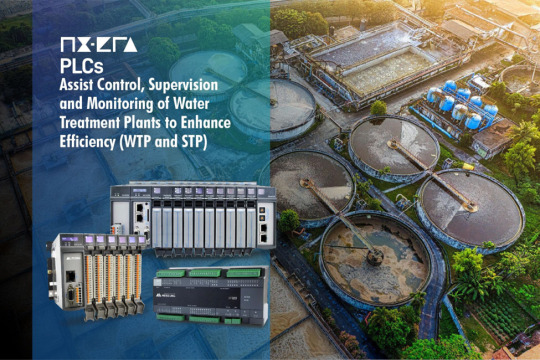
In our increasingly resource-conscious world, the efficient management of water, both in industrial and municipal settings, has moved from being a desirable practice to an absolute necessity. From ensuring the purity of drinking water that nourishes communities to effectively treating industrial wastewater generated by manufacturing processes, the challenges are complex and require sophisticated solutions. Enter the transformative power of industrial automation, where pioneering companies like Messung are at the forefront, developing cutting-edge Programmable Logic Controllers (PLCs) designed to revolutionize water monitoring and control systems for efficient industrial wastewater treatment.

A number of vital processes are involved in the complex movement of water from its natural origins to our homes and businesses and back again. The inability to provide real-time data, guarantee accurate chemical dosage, and maintain constant system reliability under a variety of operating situations are common drawbacks of traditional monitoring and control techniques. This is the exact point at which automation's intelligence and effectiveness, powered by reliable plc control systems, become essential. Through the use of advanced control techniques, automation guarantees constant water quality that satisfies stringent requirements, optimizes the use of precious resources, reduces waste production, and eventually helps to make water management more economically and environmentally responsible.
In this blog, we will explore how industrial automation through PLCs contributes towards efficiency in the process of water treatment.

The Imperative of Advanced Water Monitoring and Control
There are several complexities in the water distribution and treatment landscape. Among the many difficulties faced by operators is the requirement for constant, real-time monitoring of vital parameters such as flow rates, pressure levels, pH values, turbidity, and the presence of different contaminants. Maintaining the overall system reliability of pumps, valves, and other critical equipment is important for continuous operation while ensuring precise and timely chemical dosing is critical for efficient treatment.
The necessity for effective control methods is further increased by the more stringent environmental standards. There is tremendous demand for industries to use efficient industrial wastewater treatment systems that adhere to strict discharge regulations. To protect the public's health, municipal water treatment facilities also have to meet strict quality criteria. In this situation, integrating advanced automation technologies becomes essential to maintaining compliance and operational excellence, not merely a benefit. In order to maintain constant water quality and effective resource use, automation is becoming a necessity rather than a pipe dream.

NX-ERA PLC Series: The Nexus of Industrial Automation and the Cornerstone of Intelligent Water Management
An important advancement in automation technology for the water treatment industry is represented by our feature rich PLC series the NX-ERA. These PLCs designed with an extensive understanding of the specific demands of the sector, provide a strong and adaptable framework for controlling intricate water distribution and treatment procedures. From small-scale pumping stations to massive water and sewage water treatment plants, the NX-ERA series' built-in adaptability and scalability enable smooth adaptation to a broad range of system sizes and complexities. In order to minimize interruption and maximize investment protection, their strong compatibility with a wide range of industry standards guarantees smooth integration with current sensors, actuators, communication networks, and other essential infrastructure components.
Delving into the advanced features of plc within the NX-ERA series reveals a suite of capabilities designed for optimal water management.

High-speed Processing Power: Enables rapid and precise control of time-sensitive processes.
Advanced Communication Interfaces: Facilitate seamless data exchange with other control systems and enterprise-level platforms.
Remote I/O capabilities: Extend the reach of control and monitoring to geographically dispersed assets, providing operators with a comprehensive overview of their entire water network.
Integration with SCADA systems: Provides a centralized platform for visualization, data logging, alarm management, and advanced control strategies, empowering operators with the information and tools they need for effective decision-making.
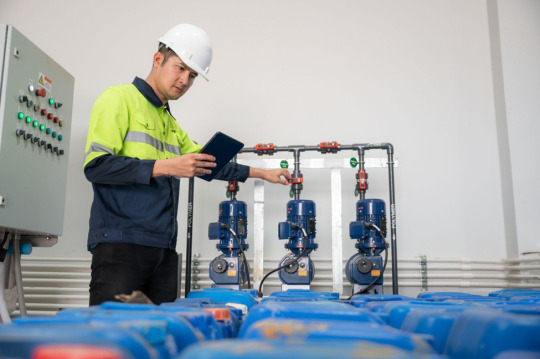
NX-ERA PLC’s Advantage for Enhanced Automation in Water Treatment
Selecting NX-ERA PLC for water management applications translates into a multitude of tangible benefits:
Unwavering Reliability: NX-ERA PLC series is designed to withstand the harsh conditions of industrial settings, and have a high Mean Time Between Failures (MTBF) and a low Mean Time to Repair (MTTR). This ensures that vital water systems operate continuously and dependably, reducing downtime and increasing operational efficiency.
Unmatched Adaptability: NX-ERA PLC facilitates system updates and expansions by supporting a broad range of communication protocols, including industry-standard choices like Ethernet, Modbus, and Profibus. They also provide unmatched flexibility in interfacing with a variety of field devices and current control systems.
Intuitive User-Friendly Programming: Programmers can work in a familiar and intuitive environment as they comply with the IEC 61131-3 programming standard. The software's readily apparent interface speeds up timelines for projects and lowers engineering costs by making it easier to create, commission, and maintain control programs.
Enhanced System Diagnostics: The NX-ERA series' advanced diagnostic features give operators real-time information about the health of the system and possible problems, allowing for proactive maintenance and lowering the possibility of unplanned failures.
Robust Redundancy Architecture: NX-ERA PLCs offer comprehensive redundancy across critical system layers, including IO, CPU, Profibus, and Ethernet control networks. This multi-level redundancy ensures uninterrupted operations even in the event of hardware or communication failures, making them ideal for mission-critical water treatment applications where system uptime is paramount.

Diverse Applications Across the Water Treatment and Distribution Spectrum
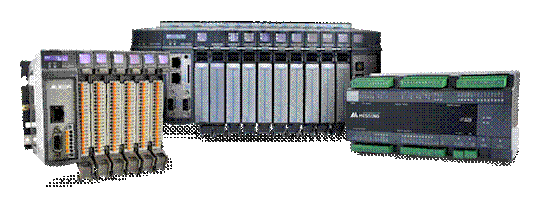
NX-ERA PLC series finds versatile applications across the entire spectrum of water management:
Optimizing Water Treatment Plants: NX-ERA PLC automates vital procedures in water treatment plants, including backwashing, coagulation and flocculation, sedimentation, filtration, disinfection (including accurate chemical dosing), and raw water intake control. High-quality drinking water that adheres to stringent regulatory criteria is produced by ongoing turbidity monitoring and management.
Increasing Pumping Station Efficiency: NX-ERA PLC uses advanced control algorithms to regulate water flow rates and preserve ideal pressure in distribution networks. By optimizing pump operation depending on current demand and system conditions, this intelligent control results in significant energy savings.
Intelligent Reservoir Management: NX-ERA PLC offers real-time monitoring of vital data, including water levels, temperature, and water quality indicators, for reservoirs and storage facilities. This data enables proactive management of water resources, informed decision-making regarding water release, and early detection of potential issues.
Revolutionizing Wastewater Treatment Plants: The NX-ERA Premium PLCs are vital for controlling and monitoring sewage treatment processes. These include pumping, sedimentation, biological treatment, sludge handling, and discharge. The PLCs enhance efficiency by automating pumps, valves, and sensors. They reduce costs by saving energy and chemicals while ensuring compliance with environmental rules. With PLCs, industrial wastewater treatment becomes more precise and reliable.

Messung’s Role in Sustainable Wastewater Management
Protecting the environment and public health depends on efficient sewage treatment. To improve wastewater management, Messung offers reliable automation systems. Operators can precisely regulate sewage treatment processes with the NX-ERA PLC series, which guarantees higher pollutant removal, increased effluent quality, and less environmental impact.
It is essential to comprehend the water and sewage treatment processes, and the NX-ERA PLC Series offers the technology to maximize efficiency in both. Our cutting-edge automation systems enable sustainable, effective operations in both industrial and municipal corporations.

Conclusion
Advanced automation, like the NX-ERA PLC series, is essential for efficient and sustainable water management. With deep expertise in water industry challenges, we help build a greener future. With intelligent control, real-time monitoring, and seamless integration, we help organizations optimize treatment processes, reduce waste, and conserve water resources.
Ready to transform your water management with smart automation? Reach out to us today to explore how our cutting-edge controllers can boost efficiency, reliability, and sustainability in your operations.
#Programmable Logic Controllers (PLCs)#industrial wastewater treatment#water monitoring and control systems#plc control systems#process of water treatment#sewage water treatment plants#water management applications#IEC 61131-3 programming standard#water treatment plants#Premium PLCs#sewage treatment#water management
0 notes
Text
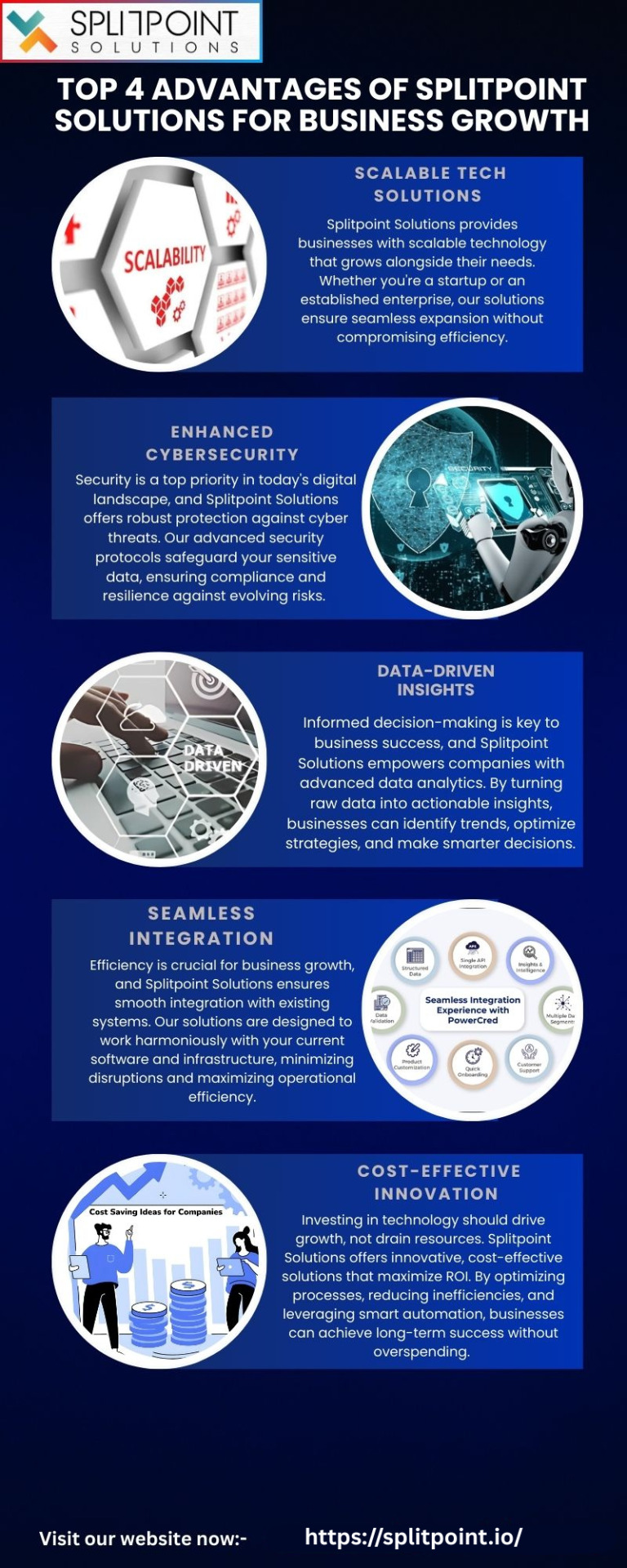
Splitpoint Solutions empowers businesses to accelerate growth by providing real-time visibility and control over their IT environments, enabling faster issue resolution, optimized performance, and enhanced end-user experiences. Visit now : https://splitpoint.io/
0 notes
Text
Wire rope electric hoist: a powerful assistant for efficient lifting.
#Wire rope electric hoist#Efficient lifting equipment#Industrial construction hoist#Powerful lifting capacity#Multiple lifting heights available#Stable operating speed#Compact structure design#Sturdy and durable materials#Advanced transmission system#Intelligent safety protection#Overload protection device#Travel limiter#Reliable braking system#Intelligent monitoring function#Industrial manufacturing application#Construction application#Logistics and warehousing application#Electric power maintenance application
1 note
·
View note
Text
Application Performance Monitoring Market Growth Drivers, Size, Share, Scope, Analysis, Forecast, Growth, and Industry Report 2032
The Application Performance Monitoring Market was valued at USD 7.26 Billion in 2023 and is expected to reach USD 22.81 Billion by 2032, growing at a CAGR of 34.61% over the forecast period 2024-2032.
The Application Performance Monitoring (APM) market is expanding rapidly due to the increasing demand for seamless digital experiences. Businesses are investing in APM solutions to ensure optimal application performance, minimize downtime, and enhance user satisfaction. The rise of cloud computing, AI-driven analytics, and real-time monitoring tools is further accelerating market growth.
The Application Performance Monitoring market continues to evolve as enterprises prioritize application efficiency and system reliability. With the increasing complexity of IT infrastructures and a growing reliance on digital services, organizations are turning to APM solutions to detect, diagnose, and resolve performance bottlenecks in real time. The shift toward microservices, hybrid cloud environments, and edge computing has made APM essential for maintaining operational excellence.
Get Sample Copy of This Report: https://www.snsinsider.com/sample-request/3821
Market Keyplayers:
IBM (IBM Instana, IBM APM)
New Relic (New Relic One, New Relic Browser)
Dynatrace (Dynatrace Full-Stack Monitoring, Dynatrace Application Security)
AppDynamics (AppDynamics APM, AppDynamics Database Monitoring)
Cisco (Cisco AppDynamics, Cisco ACI Analytics)
Splunk Inc. (Splunk Observability Cloud, Splunk IT Service Intelligence)
Micro Focus (Silk Central, LoadRunner)
Broadcom Inc. (CA APM, CA Application Delivery Analysis)
Elastic Search B.V. (Elastic APM, Elastic Stack)
Datadog (Datadog APM, Datadog Real User Monitoring)
Riverbed Technology (SteelCentral APM, SteelHead)
SolarWinds (SolarWinds APM, SolarWinds Network Performance Monitor)
Oracle (Oracle Management Cloud, Oracle Cloud Infrastructure APM)
ServiceNow (ServiceNow APM, ServiceNow Performance Analytics)
Red Hat (Red Hat OpenShift Monitoring, Red Hat Insights)
AppOptics (AppOptics APM, AppOptics Infrastructure Monitoring)
Honeycomb (Honeycomb APM, Honeycomb Distributed Tracing)
Instana (Instana APM, Instana Real User Monitoring)
Scout APM (Scout APM, Scout Error Tracking)
Sentry (Sentry APM, Sentry Error Tracking)
Market Trends Driving Growth
1. AI-Driven Monitoring and Automation
AI and machine learning are revolutionizing APM by enabling predictive analytics, anomaly detection, and automated issue resolution, reducing manual intervention.
2. Cloud-Native and Hybrid APM Solutions
As businesses migrate to cloud and hybrid infrastructures, APM solutions are adapting to provide real-time visibility across on-premises, cloud, and multi-cloud environments.
3. Observability and End-to-End Monitoring
APM is evolving into full-stack observability, integrating application monitoring with network, security, and infrastructure insights for holistic performance analysis.
4. Focus on User Experience and Business Impact
Companies are increasingly adopting APM solutions that correlate application performance with user experience metrics, ensuring optimal service delivery and business continuity.
Enquiry of This Report: https://www.snsinsider.com/enquiry/3821
Market Segmentation:
By Solution
Software
Services
By Deployment
Cloud
On-Premise
By Enterprise Size
SMEs
Large Enterprises
By Access Type
Web APM
Mobile APM
By End User
BFSI
E-Commerce
Manufacturing
Healthcare
Retail
IT and Telecommunications
Media and Entertainment
Academics
Government
Market Analysis: Growth and Key Drivers
Increased Digital Transformation: Enterprises are accelerating cloud adoption and digital services, driving demand for advanced monitoring solutions.
Rising Complexity of IT Environments: Microservices, DevOps, and distributed architectures require comprehensive APM tools for performance optimization.
Growing Demand for Real-Time Analytics: Businesses seek AI-powered insights to proactively detect and resolve performance issues before they impact users.
Compliance and Security Needs: APM solutions help organizations meet regulatory requirements by ensuring application integrity and data security.
Future Prospects: The Road Ahead
1. Expansion of APM into IoT and Edge Computing
As IoT and edge computing continue to grow, APM solutions will evolve to monitor and optimize performance across decentralized infrastructures.
2. Integration with DevOps and Continuous Monitoring
APM will play a crucial role in DevOps pipelines, enabling faster issue resolution and performance optimization throughout the software development lifecycle.
3. Rise of Autonomous APM Systems
AI-driven automation will lead to self-healing applications, where systems can automatically detect, diagnose, and fix performance issues with minimal human intervention.
4. Growth in Industry-Specific APM Solutions
APM vendors will develop specialized solutions for industries like finance, healthcare, and e-commerce, addressing sector-specific performance challenges and compliance needs.
Access Complete Report: https://www.snsinsider.com/reports/application-performance-monitoring-market-3821
Conclusion
The Application Performance Monitoring market is poised for substantial growth as businesses prioritize digital excellence, system resilience, and user experience. With advancements in AI, cloud-native technologies, and observability, APM solutions are becoming more intelligent and proactive. Organizations that invest in next-generation APM tools will gain a competitive edge by ensuring seamless application performance, improving operational efficiency, and enhancing customer satisfaction.
About Us:
SNS Insider is one of the leading market research and consulting agencies that dominates the market research industry globally. Our company's aim is to give clients the knowledge they require in order to function in changing circumstances. In order to give you current, accurate market data, consumer insights, and opinions so that you can make decisions with confidence, we employ a variety of techniques, including surveys, video talks, and focus groups around the world.
Contact Us:
Jagney Dave - Vice President of Client Engagement
Phone: +1-315 636 4242 (US) | +44- 20 3290 5010 (UK)
#Application Performance Monitoring market#Application Performance Monitoring market Analysis#Application Performance Monitoring market Scope#Application Performance Monitoring market Growth#Application Performance Monitoring market Share#Application Performance Monitoring market Trends
0 notes
Text
#IoT remote monitoring#IoT remote monitoring operations#IoT#remote monitoring IoT#legacy IoT#IoT operational efficiency#smart technology#predictive maintenance#asset tracking#IoT applications
0 notes
Text
“Age tech” is a growing field, and it is important to distinguish it from “health tech.”
What is Age Tech ?
Age tech, or aging technology, focuses on developing technological solutions specifically designed to address the needs and challenges associated with aging.
Its main objective is to improve the quality of life of the elderly by promoting
Autonomy
Enabling seniors to remain independent for longer.
Health
Monitor and support physical and mental health.
Well-being
Improve comfort, safety and social connection.
Main differences with Health Tech
Although age tech and health tech share common health-related goals, there are important distinctions.
Target audience :
Health tech is aimed at a broad audience, covering all ages and health conditions.
Age tech focuses specifically on older adults and their unique needs.
Specific objectives :
Health tech often targets the diagnosis, treatment and management of diseases.
Age tech focuses on prevention, maintaining autonomy and improving the quality of life related to aging.
Approach :
Health tech can involve complex medical technologies and clinical interventions.
Age tech favors user-friendly solutions, adapted to the abilities and preferences of older people.
Examples of Age Tech technologies
Connected objects : Smart watches, motion sensors, health tracking devices.
Software and applications : Cognitive exercises, communication with loved ones, medication reminders.
Robotics : Personal assistants, companion robots, mobility aids.
Telemedicine : Remote consultations, home monitoring, management of chronic diseases.
Smart homes : Automatic lighting, fall detection, security systems.
In short, age tech is a specialized branch of health tech, focused on the unique needs of older adults. Its development promises to have a significant impact on the way we age, allowing us to live longer, healthier, and more independently.
Go further
#Age Tech#Mobility assistance#Improving quality of life#Approach#Autonomy of the elderly#Senior well-being#Motion sensors#Social Connection#diagnosis of gait#balance and movement disorders in the elderly: our expertise#Health tracking devices#Disease management#Health Tech#Independence#Software and applications#Fight against isolation#Maintaining autonomy#Smart homes#Smart watches#Specific objectives#Connected objects#prevention#Target audience#Robotics#Seniors' health#Security#Health monitoring#Aging Technology#Telemedicine#treatment
0 notes
Text
How to Use Telemetry Pipelines to Maintain Application Performance.
Sanjay Kumar Mohindroo Sanjay Kumar Mohindroo. skm.stayingalive.in Optimize application performance with telemetry pipelines—enhance observability, reduce costs, and ensure security with efficient data processing. 🚀 Discover how telemetry pipelines optimize application performance by streamlining observability, enhancing security, and reducing costs. Learn key strategies and best…
#AI-powered Observability#Anonymization#Application Performance#Cloud Computing#Cost Optimization#Cybersecurity#Data Aggregation#Data Filtering#Data Normalization#Data Processing#Data Retention Policies#Debugging Techniques#DevOps#digital transformation#Edge Telemetry Processing#Encryption#GDPR#HIPAA#Incident Management#IT Governance#Latency Optimization#Logging#Machine Learning in Observability#Metrics#Monitoring#News#Observability#Real-Time Alerts#Regulatory Compliance#Sanjay Kumar Mohindroo
0 notes
Text
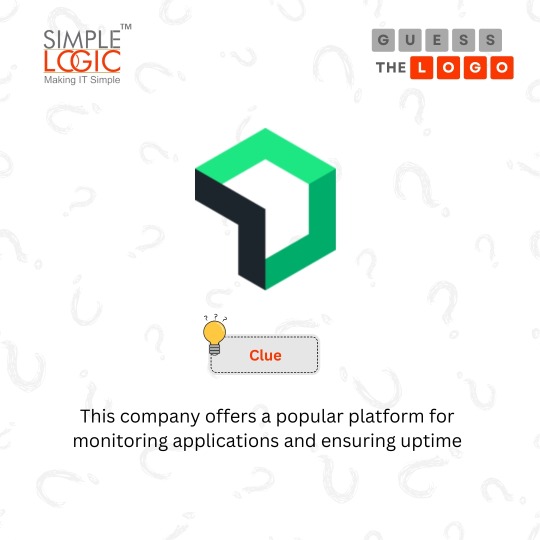
#Guess Let's play 'Guess the Logo'! 🤔
Can you recognize this logo? Drop your guesses below👇
💻 Explore insights on the latest in #technology on our Blog Page 👉 https://simplelogic-it.com/blogs/
🚀 Ready for your next career move? Check out our #careers page for exciting opportunities 👉 https://simplelogic-it.com/careers/
#LogoChallenge#TechTrivia#GuessTheLogo#Logo#NewRelic#Monitoring#Application#SimpleLogicIT#MakingITSimple#SimpleLogic#MakeITSimple
0 notes